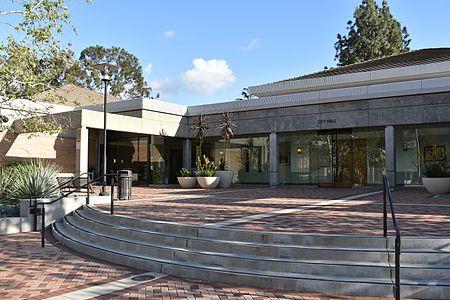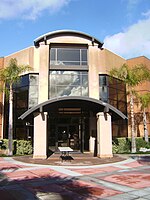San Dimas, California
1960 establishments in CaliforniaCities in Los Angeles County, CaliforniaIncorporated cities and towns in CaliforniaPomona ValleyPopulated places established in 1960 ... and 2 more
San Dimas, CaliforniaUse mdy dates from January 2015

San Dimas (Spanish for "Saint Dismas") is a city in the San Gabriel Valley of Los Angeles County, California, United States. At the 2020 census, its population was 34,924. It historically took its name from San Dimas Canyon in the San Gabriel Mountains above the northern section of present-day San Dimas. San Dimas is bordered by the San Gabriel Mountains range to the north, Glendora and Covina to the west, La Verne to its north and east side, Pomona to its south and east side, Walnut and the unincorporated community of Ramona to the southwest, and the unincorporated community of West San Dimas, which is an enclave in the southwestern portion of the city.
Excerpt from the Wikipedia article San Dimas, California (License: CC BY-SA 3.0, Authors, Images).San Dimas, California
West Arrow Highway,
Geographical coordinates (GPS) Address Nearby Places Show on map
Geographical coordinates (GPS)
| Latitude | Longitude |
|---|---|
| N 34.102777777778 ° | E -117.81611111111 ° |
Address
West Arrow Highway 439
91773
California, United States
Open on Google Maps



